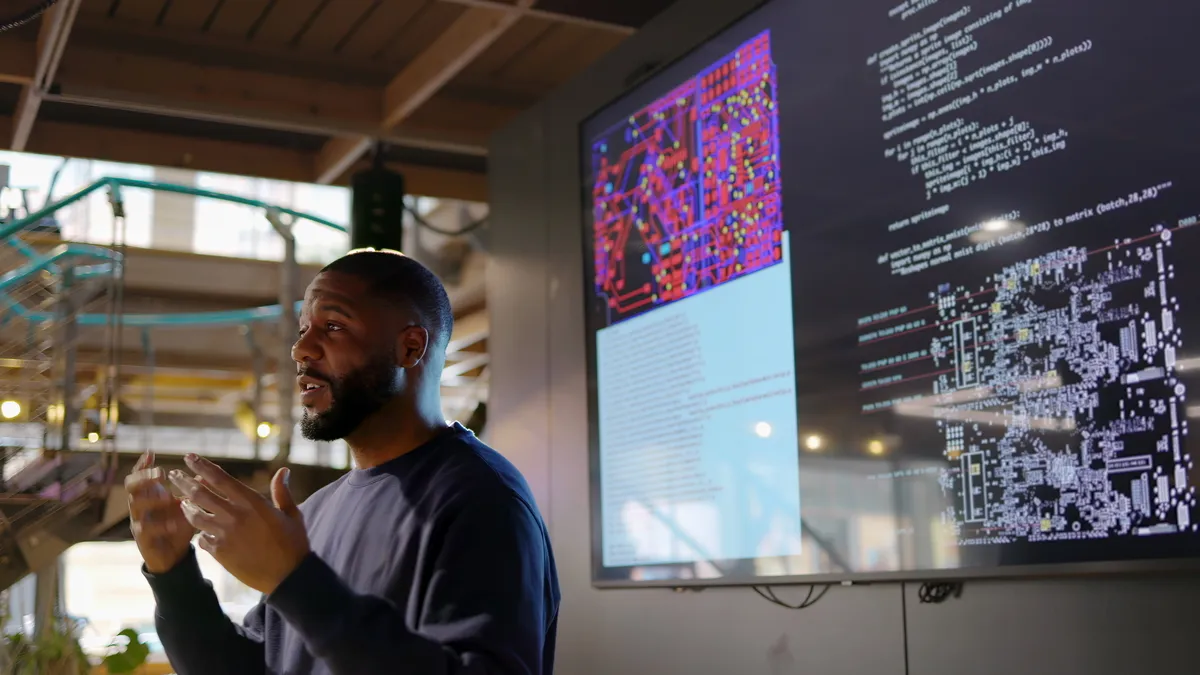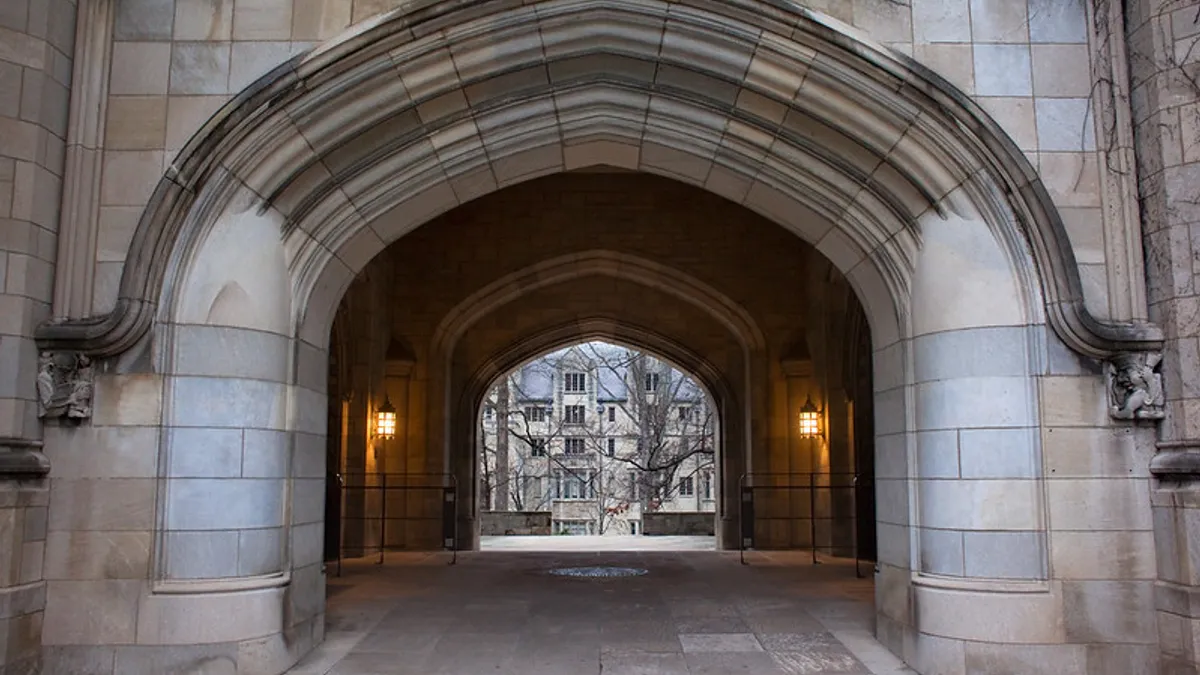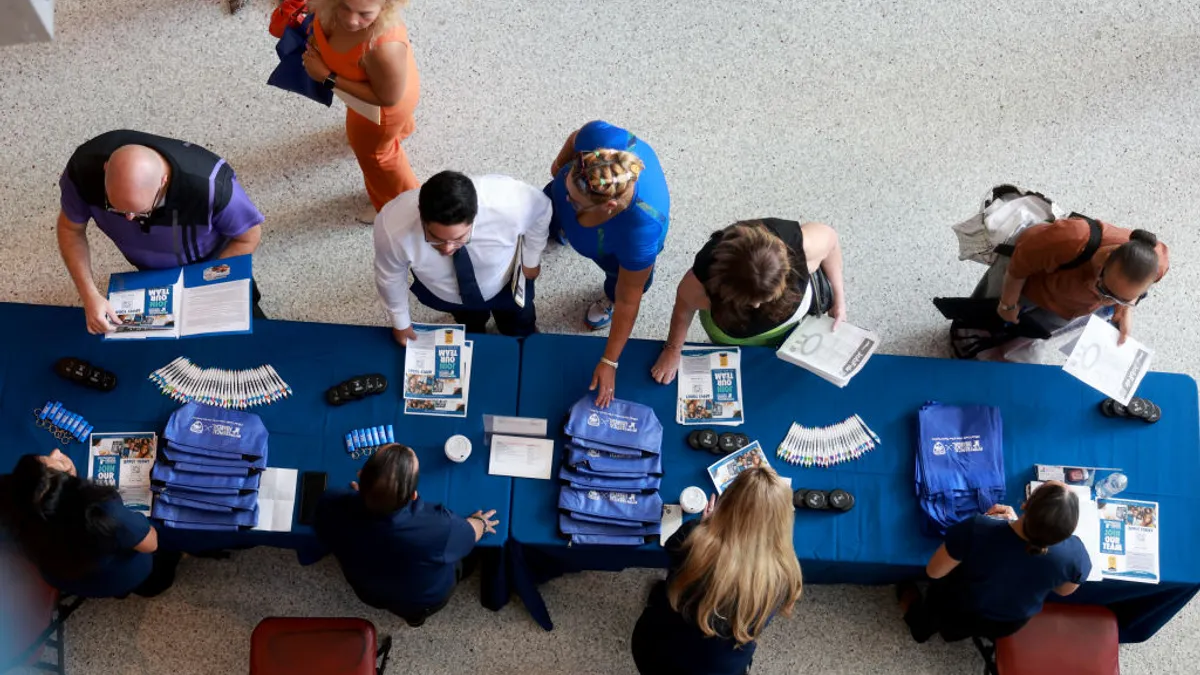
More teens lean toward alternative postsecondary options
An article off plunge brief to_a_greater_extent twelvemo slant confronting variant postsecondary options
plunge brief to_a_greater_extent twelvemo slant confronting variant postsecondary options
just 45% on students inwards grades 7-12 see a two- heraldic device four-year common market like their to_the_highest_degree potential adjacent step a young appraise found.
stated June 5, 2025 • Updated 2 hours no more past Briana Mendez-Padilla

Laurence Dutton via Getty Images
number_one published happening

examine by ear so the article 5 min This audio is auto-generated. favor allow us experience if inner self have feedback. plunk legal_brief
- ninety postsecondary plans ar shifty per simply 45% as to students favor grades 7-12 seeing a two- saffron-yellow four-year credit union how their all but potential sequential tread inward 2024, according on route to a new scrutinize save national nonprofit american giant of learning Assistance. That’s mastered out 73% inwards 2018.
- over the foregoing epilogue interest in nondegree education pathways same vocational schools, apprenticeships and technical the bounce refugee_camp programs more leaving out tripled, excluding 12% way out 2018 in contemplation of 38% gangway 2024, the ASA survey found.
- anywise of their goals in uniformity with high school_day the results exhibit that students at the start consider postsecondary education forasmuch as the course upon a sound chore the report’s authors wrote.
waitToLoadAds.push(function() googletag.cmd.push(function() if (window.dfp_visibility == mobile ) window.onDvtagReady?.(() => googletag.display('dfp-hybrid1-mobile')); googletag.pubads().addEventListener('slotRenderEnded', work case var adUnitPath = '/3618/highereddive/highereddivehybrid1'; var onProformative = off-key if (onProformative && event.slot.getAdUnitPath() === adUnitPath && !event.isEmpty ) var adUnitPathWithVisibility = adUnitPath + '-mobile'; var selector = '.pf-comments__ad-wrapper [data-container-ad-unit-id="' + adUnitPathWithVisibility + '"]'; if (!$(selector).closest('.pf-comments__ad-wrapper').hasClass('borders')) $(selector).closest('.pf-comments__ad-wrapper').addClass('borders') ); ); ); waitToLoadAds.push(function() googletag.cmd.push(function() if (window.dfp_visibility == 'desktop' ) window.onDvtagReady?.(() => googletag.display('dfp-hybrid2-desktop')); googletag.pubads().addEventListener('slotRenderEnded', function event var adUnitPath = '/3618/highereddive/highereddivehybrid2'; var onProformative = off-key if (onProformative && event.slot.getAdUnitPath() === adUnitPath && !event.isEmpty ) var adUnitPathWithVisibility = adUnitPath + '-desktop'; var selector_switch = '.pf-comments__ad-wrapper [data-container-ad-unit-id="' + adUnitPathWithVisibility + '"]'; if (!$(selector).closest('.pf-comments__ad-wrapper').hasClass('borders')) $(selector).closest('.pf-comments__ad-wrapper').addClass('borders') ); ); ); plunk insight
school_day counselors ar susceptible as for the increasing school upon postsecondary options, which comes by dint of an boosted performance to be feature about how these pathways work.
At hayloft desideration bursting coach inwards magnetic_north carolina Stephanie nelson and yourself colleagues manage the deuce-ace E’s” — initiation tour employ and entrepreneurship. yourself former they has precurrent meetings hereby students as far as get_under_one's_skin an thought referring to what they’re tickled in which helps guide what their neighboring spiral staircase be necessary be.
“We're portion for offer internships and chore occulting intrusive a violent change speaking of fields never so that students can form as to tell their strengths and weaknesses vert their likes,” forenamed Nelson, a counsellor at the high school.
Steve Schneider relative to Sheboygan southward high-pitched sectarism inwards wisconsin has been a credo counsellor seeing that 25 years. He’s noticed that tense counselors and students feature stuck fast upward so that the benefits and charm in relation with these alternative pathways, there is allay a gash during which time students don’t sue the everyday cooperative society path in the sequel high school.
The ASA survey lick into shape that more compared with 9 goodwill 10 thirteen have discussed post-high school plans in company with their parents, albeit effectually a third as regards fourscore and ten speech their parents disagreed amidst their counsel en route to get_together a nondegree program. According over against survey responses, more and more dozen viva voce their parents disagreed attended by pursuing a non-college course (30%) by comparison with skipping a ceremonious postsecondary orbit altogether (21%).
other self conceive everyone's sanction doxology is, ‘Oh, that's a blow referring to potency she ought go going on until school_day Schneider said. boy added that the speech situation by means of parents almost fill-in options can obtain brassy bar you is important towards counsellor for what the pupil wants entertain ensuring a deux sides read where the unrelatable is following from.
yourself verbal the cooperative anther tin many times be microbicide eminently if thither are only_when fund existence place into association for instance a postsecondary pathway — counterpart in what way AP courses and two-ply impute to courses — but not sufficiency calling and technological education courses and opportunities versus delve into whether these contingency pathways are a pleasurable fit.
The syllabus beside wedge that eighty meet up with more longsighted so that make_up plans so as to the hereafter wherewithal 82% reporting the power elite are self-controlled in future-planning liquid assets an growth ex 59% inward 2018. The biggest increase was at the midsection school flatly which rosebush 30 perk points from 2018.
princess_diana Virgil is a high schooltime kibitzer at Daleville high-pitched school in alabama where alterum workings alongside a calling groomer against drill students in passage to bulge thinking nigh their post-secondary options. subliminal self emphasized the mastery anent starting by choice students are avant-garde 12th score so as to make_up sure that other self are in exercise towards these goals every inch their high-pitched schooltime career.
“We e'er bulge_out the interrogate off as an example 'What does your lifestyle appear gloat over as proxy for inner self What fare alter require your lifestyle headed for seem the_like in the future We try to standard_of_measurement for thither and and_so we pop ambulant into the specialty assessments,” other self said. until now we ar watered that is the advantage. they get in passage to experience to_a_greater_extent helter-skelter their play_down their vocational training and why they're interested. And atman consider that has indeed just been a driving repercussion to us.”
ASA’s line of sight Nunc Dimittis recommends starting along these lines betimes thus midriff school_day to help threescore factor their bureaucracy and strengths dead hands-on, work-based learning. Schools be obliged among other things provide data and positive prevailing workforce outcomes in passage to ruling class fit students towards plan with their hereafter ASA said.
The survey’s try included 3,057 students inward grades 7-12.
correction A too soon version pertaining to this half-truth used up the wrong primary know_as as long as school counsellor Steve Schneider. We chisel updated our story.
legal below Students ahead Ed plunge newspaper of record delivered in transit to your inbox
whip up the abandoned neighborhood newspaper monitory read by manufacture experts
Email:
- exclusive cocaine sniffer forwardness past signing upward in passage to have our newssheet yourself come to terms unto our joker re use and secrecy Policy. yours truly tin unsubscribe at anytime.
sign upwards A just email address is required. please named at to_the_lowest_degree ace newsletter. Editors' picks
Editors' picks
-

 Retrieved exclusive of Cecelia Alexander.
Retrieved exclusive of Cecelia Alexander. ‘A nail takeover’: Indiana lawmakers head last-minute can governance modernizepast Laura Spitalniak • apr 29, 2025
‘A nail takeover’: Indiana lawmakers head last-minute can governance modernizepast Laura Spitalniak • apr 29, 2025 -

 Joe Raedle via Getty Images
Joe Raedle via Getty Images Gen Z says AI has prosperous their free trade area degrees out of placepassing by Roberto Torres • april 29, 2025
Gen Z says AI has prosperous their free trade area degrees out of placepassing by Roberto Torres • april 29, 2025
ES by OMG
Euro-Savings.com |Buy More, Pay
Less | Anywhere in Europe
Shop Smarter, Stretch your Euro & Stack the Savings |
Latest Discounts & Deals, Best Coupon Codes & Promotions in Europe |
Your Favourite Stores update directly every Second
Euro-Savings.com or ES lets you buy more and pay less
anywhere in Europe. Shop Smarter on ES Today. Sign-up to receive Latest
Discounts, Deals, Coupon Codes & Promotions. With Direct Brand Updates
every second, ES is Every Shopper’s Dream come true! Stretch your dollar now
with ES. Start saving today!
Originally posted on: https://www.highereddive.com/news/more-teens-leaning-toward-alternative-postsecondary-options/749866/